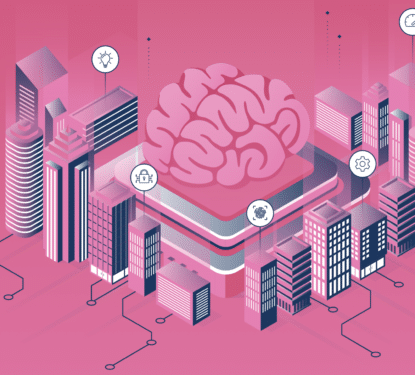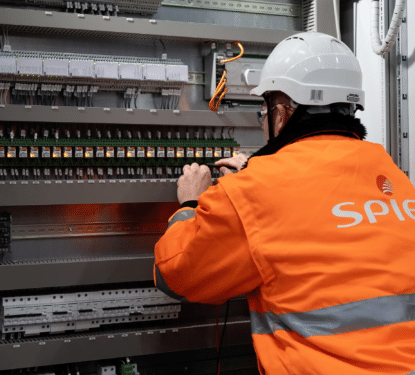We have now entered the third wave of Information Technology which will be even more profound than the previous 2; that have already changed the world over the last 50 years. Below we discuss some of the findings from our recent research into the Internet of Things in Smart Buildings - http://memoori.com/portfolio/internet-things-smart-buildings-2014-2020/
Connected products in Smart Buildings will offer a totally new set of choices of how we capture and create value from the phenomenal amount of new data they will generate. Converting this data into actionable intelligence across a whole series of seemingly unrelated services in the built environment.
Theoretically they should be able to achieve this for a lower cost and provide add-on services that will reduce the building owners ROI.
However to achieve this we will need to form new relationships as the industry boundaries are expanded, causing the routes to market to be redefined and contractual procedures drastically changed.

These changes are not going to be welcomed by many in the building services industry because they will threaten their existence. But to establish how these changes wiIl manifest themselves you have to breakdown the business into its new core activities and how they will be organised in order for the BIoT to work. The seemingly most logical set up would be for BIoT to be organised around 3 main contracts.
The first contract will comprise of a series of separate tenders for each of the building services such as HVAC, Security and Lighting etc. This is how it is organised today but the contract will finish at the field equipment level with the necessary machine controls and sensors fitted to the hardware at the factory and probably specified within the third major contract.
The Supervisory software will now be part of Contract 3 - Managed Services and Big Data and not Contract 1, where those responsible for supplying this and often an additional level of control for integration acted. Their software products and services may well be selected by those responsible for Big Data in the early stages of BIoT development.
Contract 2, let’s call it, Enablement Hardware and Transmission, will supply and fit the wired or wireless modules to the devices and sensors and complete the network together with its software controls. A new breed of wireless controls manufactures having leading edge energy harvesting technology will figure prominently here and IT network installers will be the preferred installers on this contract.
Contract 3 will be Managed Services which will collect, store analyse all the data by system application, commonly referred to as Big Data operating in the cloud. This contract does not have to be a managed service. Building owners having large estates may well decide to provide and or link in to their enterprise IT System.
On Contract 1, the demand side Mechanical / Electrical engineering consultants / contractors and the owners Facility Managers will together set the specification and select the winning contractor. For Contracts 2 and 3 the buyers Chief Information Officer (CIO) will take responsibility, aided by consultants, and in-house specialists for setting the specification and selecting the contractor.
Since the inception of Building Automation Systems (BAS), the major controls conglomerates have taken the contract to design and deliver hardware and software; installing the controls contract on Smart Buildings particularly where integration between other services were required.
Companies such as Honeywell, Johnson Controls, Schneider and Siemens have much experience and are well respected in some vertical markets. They could bid for Contract 3 in conjunction with IT Software majors. Last year, Schneider signed a strategic technology agreement with one of the world’s major software companies, OSIsoft. OSIsoft will provide their PI System, a leading infrastructure technology for the management of real-time data and events whilst Schneider Electric will provide innovative and comprehensive energy management solutions.
Cisco’s foray into the market has involved the development of building automation and security systems over IP, leveraging on their core expertise in the network domain, and they have also maintained a long-standing partnership with Johnson Controls. Intel meanwhile is partnering with Daikin on HVAC equipment to harness the power of the Internet of Things by using Intel-based intelligent gateway solutions to deploy a complete end-to-end solution for commercial HVAC equipment.
These type of arrangements could help to overcome the major problem of installing BIoT in existing buildings. Converting existing Smart Buildings to BIoT is going to be a major challenge because of integrating heterogeneous networks working on different standards and protocols into a single network structure.
This is a key finding from our recent research into the BIOT - http://memoori.com/portfolio/internet-things-smart-buildings-2014-2020/
As we have already established, no single standard or communications protocol is likely to emerge to manage the flow of data between devices, networks and the cloud, and legacy systems will co-exist with newer solutions designed for compatibility and interconnectivity for years to come.
We will therefore need to find ways of integrating data sources in multiple formats for these existing buildings.
The other alternative is to strip out the existing controls from all of the existing systems and start again. At the present time this is unlikely to be cost effective. We will learn a great deal by applying BIoT to new buildings and in five years time we will be better placed to have cost effective solutions for retrofitting to existing buildings.



